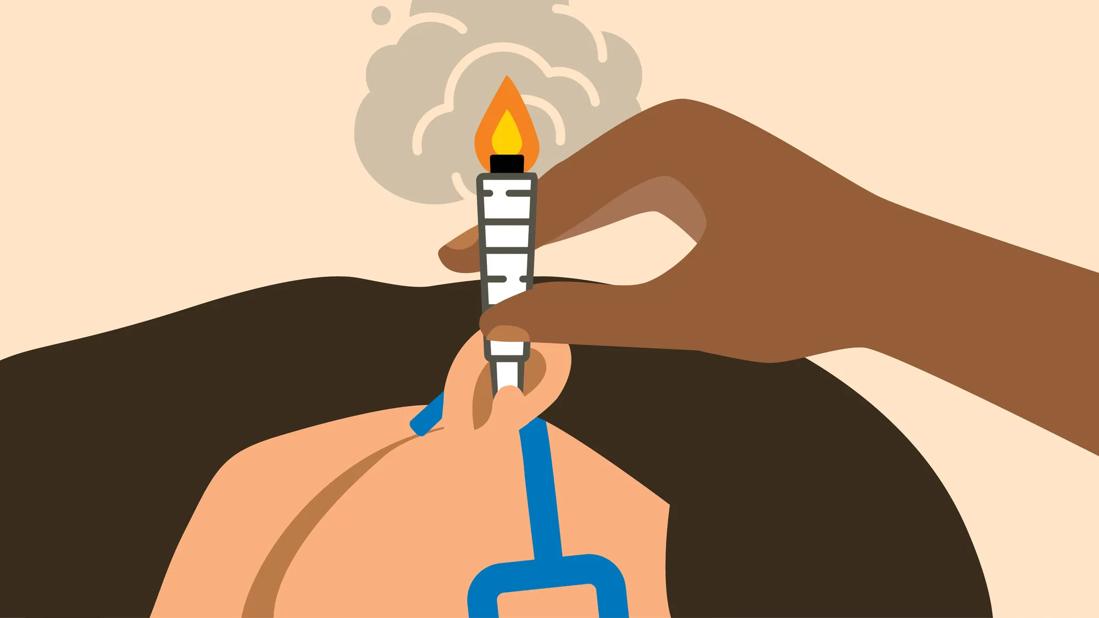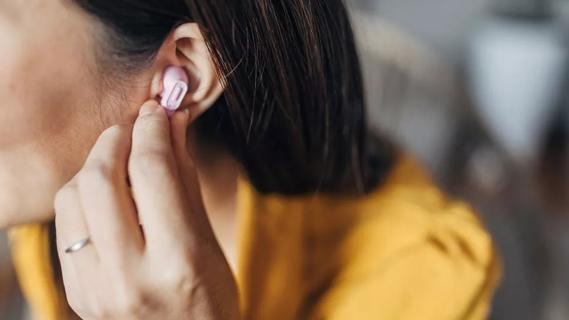This dangerous practice can cause burns or a ruptured eardrum, and can make earwax blockages worse

Earwax can be a little gross, right? When you suspect that extra gunk is lurking inside your ear canal, you may feel compelled to clean it out. But a tactic known as ear candling is absolutely not a safe or effective way to do it, says otolaryngologist Raj Sindwani, MD. And in fact, you likely don’t need to clean your ears at all.
Advertisement
Cleveland Clinic is a non-profit academic medical center. Advertising on our site helps support our mission. We do not endorse non-Cleveland Clinic products or services. Policy
Ear candling, sometimes known as ear coning, refers to a practice that some people claim can get rid of excess earwax, aka cerumen. It involves placing the base of a long, hollow candle (called ear cones or Auricle candles) in the opening of the ear canal and lighting the candle’s wick at the other end.
“The idea behind it, which has not been proven, is that lighting the candle can create a little vacuum of negative pressure that encourages earwax to come up and out of the ear, thereby cleaning the ear,” Dr. Sindwani explains.
If ear candling sounds risky, that’s because it is — and with no payoffs either. Because as it turns out, it also doesn’t work.
No, ear candling has no proven health benefits. Research continues to debunk claims that this practice can remove earwax — and in fact, it may make earwax blockages worse, among other risks. Plus, measurements conducted during one study showed that ear candling doesn’t actually produce negative pressure within the ear canal.
Here’s the other thing: Earwax is important!
“Earwax helps control the pH of the ear canal, and it also helps collect debris, among other functions,” Dr. Sindwani points out. “Your ears are supposed to have wax. It’s there for a reason.”
Advertisement
There are times, he notes, when earwax can build up and cause symptoms like pain or muffled hearing. But when that happens, there are a number of safe, effective earwax removal methods.
In other words? Even if you do have an earwax problem, ear candling is never, ever necessary.
Ear candling is both ineffective and unsafe. “In addition to not having any proven benefits, it can be very dangerous,” Dr. Sindwani warns.
Risks include:
There have even been reports of house fires as a result of ear candling.
As the American Academy of Otolaryngology reports, “There is no evidence that [ear candles] remove impacted cerumen, and candling can cause serious damage to the ear canal and eardrum.” For all these reasons, it’s illegal in the U.S. and Canada to sell or import ear candles with the claim that they have a medical purpose.
So, you want to clean out your ears. What should you do about it?
“Ear candling is never the answer,” Dr. Sindwani reiterates, “and you also shouldn’t use cotton swabs. But in fact, you typically don’t need to clean out your ears at all. They clean themselves.”
He explains that your ear canal pushes earwax out on its own, usually while you’re asleep. (Yes, it probably falls out onto your pillowcase. Just another reason to regularly wash the bedsheets!)
In some cases, earwax can build up rather than coming out on its own. That can bring symptoms like soreness and problems with your hearing.
“Those symptoms can be the result of a number of different issues, not just earwax,” Dr. Sindwani notes. “But if you’re sure they’re from earwax, you can soften the wax by using a few drops of mineral oil or over-the-counter ear cleaning drops that contain hydrogen peroxide.”
If your symptoms persist or get worse, or if you’re not sure earwax is the culprit, talk to a healthcare provider. They’ll use a microscope to see what’s going on in your ear canal. Then, they’ll recommend an appropriate course of treatment — including professionally removing any excess earwax, if that’s what you need.
Advertisement
Learn more about our editorial process.
Advertisement

Avoid poorly fitting gear, opt for quality devices and consider sound-limiting technology to help prevent noise-induced hearing loss

Care for your ears by steering clear of cotton swabs, taking precautions in loud settings and seeking medical help when needed

You can fall asleep while wearing headphones as long as you follow these tips

If your nose is constantly running, it could be allergies, chronic sinusitis, nasal polyps or other concerns

Neti pots can be useful for sinus pressure relief and removing excess mucus

Sudden hearing loss can have many causes — but it’s important to seek treatment fast

Earlobe piercings heal quicker and are less painful than cartilage piercings — proper cleaning and care are important

Upper respiratory infections, seasonal allergies, excessive use or talking too loudly can make it difficult to speak

The best parenting style balances enforcing rules and showing plenty of love

Tips include cutting back on sugar, focusing on exercise and managing stress

It can be harder to let go when you’ve invested time, energy and emotions — but it might be the healthier choice long term